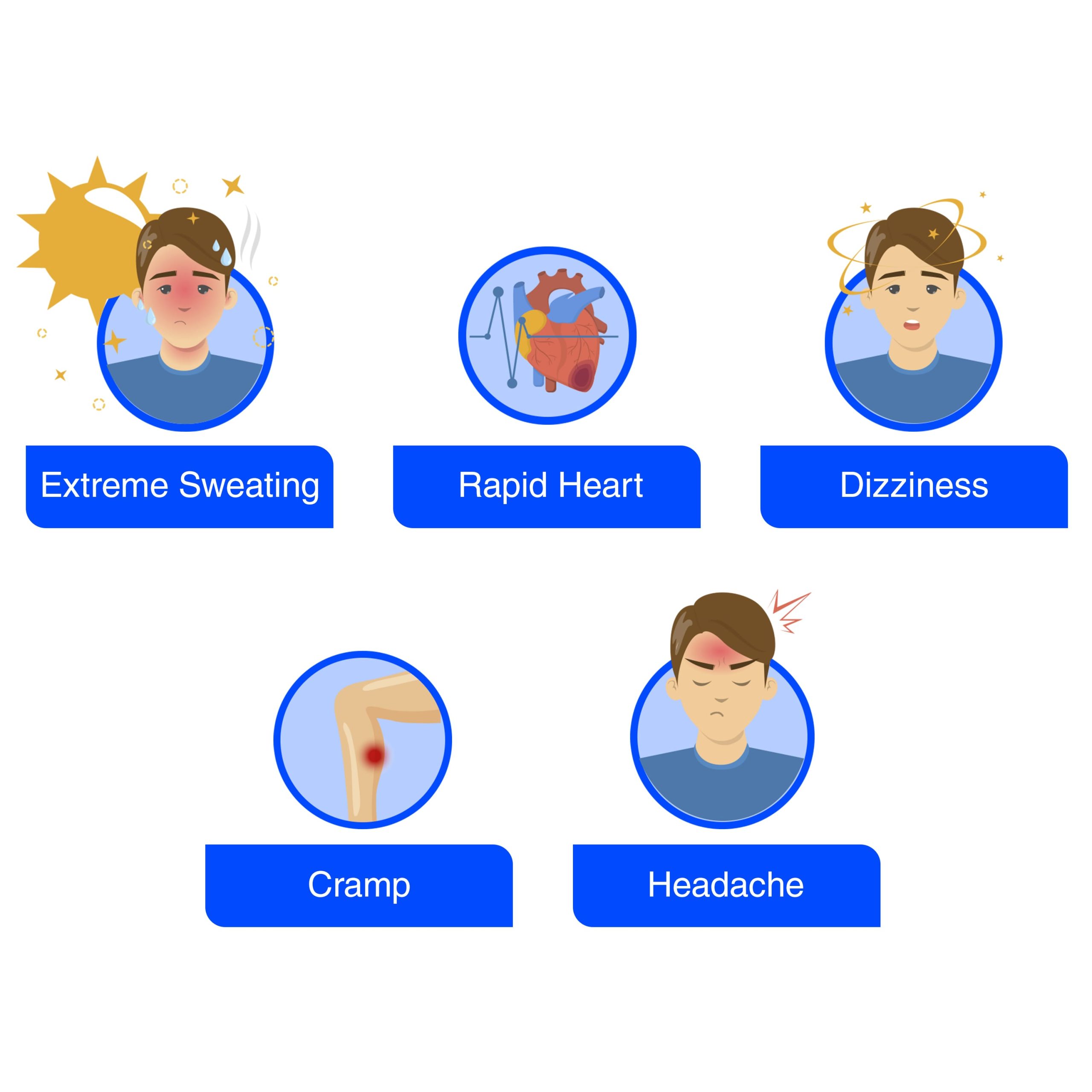
Heat Stroke and Dehydration
Heat Stroke happens when your body temperature rises rapidly and you are unable to cool it down. It can also occur if a person is spending too much time in the heat and not hydrated enough. This can be very serious and life-threatening by causing damage to your brain and other vital organs. If heat stroke is not treated immediately, it can lead to kidney failure and even death.
The symptoms of heat stroke include nausea, headache, fatigue or weakness, irritability, dizziness, seizure, hot or dry skin that is flushed but not sweaty, a high body temperature, loss of consciousness, confusion, hallucinations, rapid heartbeat and thirst.

When a person is experiencing heat stroke, it is important to be treated immediately as it can cause permanent damage or death.
- Get a person out of the heat, remove clothing and gently apply cool water to the skin by fanning to stimulate sweating.
- Apply ice packs to the groin and armpits.
- Give a person to drink plenty of fluid to rehydrate the body.
Hydration will help you prevent heat stroke. People who live in a hot climate and have a chronic condition, must take extra precautions to protect themselves from heat stroke. Always remember to drink enough fluids when you are out in the sun and will need more fluids to stay hydrated when it is hot out than usual. Pocari Sweat can be absorbed 2.2 times faster than water m. Protect yourself from the sun by wearing a hat, sunglasses and using an umbrella, and try to spend as much time indoors as possible on very hot days. Maintaining optimal hydration, a correct diet (low in saturated fat and sugar) and avoiding alcoholic or sugary drinks will also help you prevent heat stroke.

